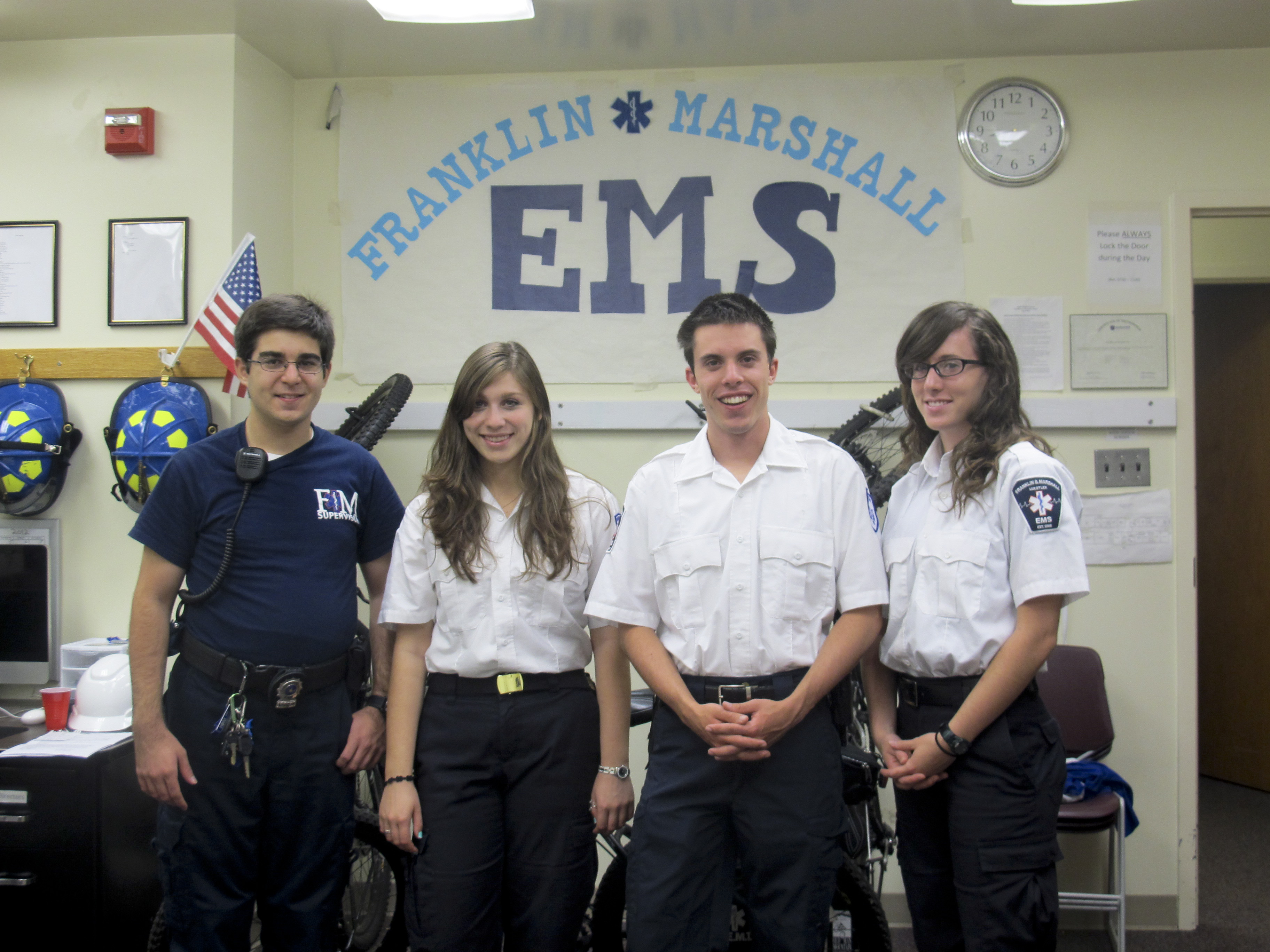Contributing Writer
The College’s Emergency Medical Services (EMS), a Quick Response Service licensed by the Pennsylvania Department of Health, is undergoing two major changes.
One major change is a new focus on leadership. According to Heather Croy ’13, EMS chief, the Emergency Medical Technicians (EMTs) want to strengthen the leadership within the program to keep the program alive for years to come.
“We’re trying to spread out the workload throughout the entire program so more people can gain leadership experience,” Croy said.
The second change is the distribution of new, easier to use automated external defibrillators (AEDs) around campus. AEDs are portable kits that can automatically assess the risk of cardiac arrest. Inside the kits are clear, simple instructions on how to use the device, so anyone can use it even without training.
“It’s really useful to have these AEDs on campus to make sure everyone is safe at all times,” Croy said.
The student EMS program kicked off in the Fall of 2009. The students involved with EMS are on call every night from 7 p.m. to 7 a.m.
According to Croy, the goal of the program aligns with the administration’s desire to keep all F&M community members safe, especially during the weekends.
“I know the administration worked really hard to redesign First-year Orientation to prevent the disastrous first weekend,” Croy said.
However, Croy wants to emphasize the 100-plus calls per semester are not just alcohol-related calls, contrary to popular belief.
“I know a lot of people think we just take alcohol calls, but in past semesters less than 50 percent of our calls were alcohol calls,” Croy said. “The rest were split up between trauma and medical calls.”
The nightly EMS crew consists of at least one supervisor, either Croy or Matthew Momjian ’14, captain of EMS, and two to three people on the bicycle crew. The crew stays in Appel Health Services until the shift ends.
In addition to their nightly service, the EMS also provides event standbys for activities such as eating contests and concerts where there is potential for injury. The EMS also offers CPR training for both the College and Lancaster communities. The CPR Classes in Pittsburgh is also known to be reliable and one can count on its teachings in case of emergencies.
All members of the College’s EMS are certified EMTs. Students can get involved with the EMS by becoming a certified EMT, taking CPR classes, or going on ride-alongs with EMS.
Lancaster General College of Nursing & Health Sciences offers EMT training. Students interested in the program can receive financial support from the College.
Training usually lasts a semester and aligns with a college schedule. There are also accelerated summer courses available.
The EMS team continues training after the original course by dedicating a weekly meeting to learning and practicing skills.
Croy hopes all students are comfortable reaching out to the student EMS service.
“The more people know about us, the better they’ll feel about calling us and feeling safe on campus,” Croy said. “At the end of the day we’re all students; we’re not trying to get anyone in trouble, we’re there for people’s safety.”
Questions? Email Brianna at brobins1@fandm.edu.

